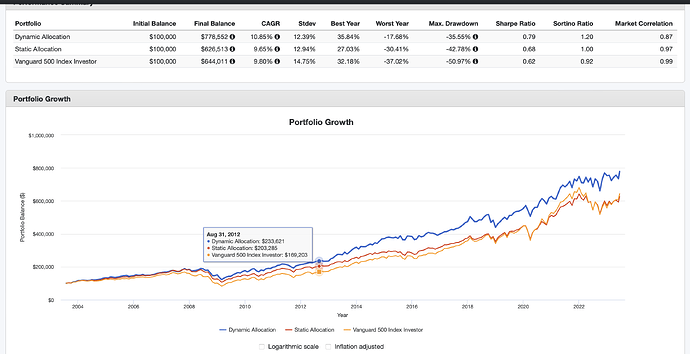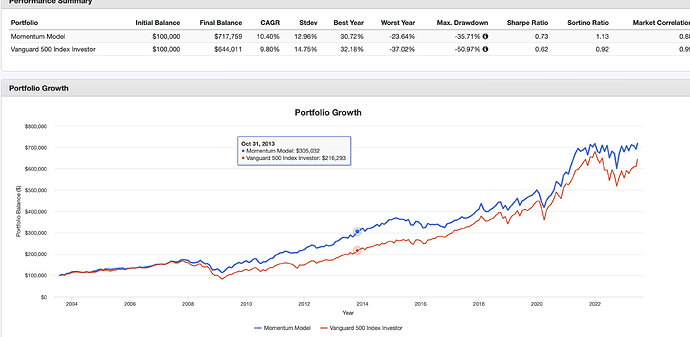This is in the category of machine learning and I understand that can get a little technical. I won’t show the Python code or any equations but still….
I have to wonder if one of the methods that is easily available at Portfolio Visualizer cannot be improved. One can backtest strategies (or even walk-forward a cross-validation) at Portfolio Visualizer that uses Relative Strength. And one can then weight the assets with the best relative strength using risk parity, minimum-variance or other strategies.
Nice! But I have concerns. This is an all-or-nothiing strategy. TLT might have adequate relative strength one month (if you rebalance monthly) and be included and it might disappear from your portfolio the next month. Wouldn’t it be better if it gradually disappeared assuming you did not have a dramatic shift in your opinion?
Also, IMHO, moving averages are prime for over-fitting. Maybe just me.
TL;DR: is there a better way?
ChatGPT has been stealing some of my ideas as we go along and has suggested (or maybe it was my idea) that I bootstrap the history of an ETF (over variable look-back periods) and essentially get a “probability that an ETF” will give a positive return going forward.
And even better, one can do this with the effect size (i.e, the return/recent standard deviation for the returns).
I have been playing with this and if you want to look at this, one year seems to be optimal (I would have guess 3 months based on what I have done with Portfolio Visualizer).
I then weight each bet (remember this will give a probability between 0 and 1) by using risk parity. When this is done it really begins to resemble Kelly-betting.
Initially, Kelly talked about betting money on every single horses in a horse race. You would bet according to your calculated probability for each horse. If (and only if) your probabilities were better than the what the bookies were put up as odd you would win over the long-term.
So to the extent that the relative strength (or bootstrapped calculation of the odds) gives you an edge you win.
Honestly, I do not think there is a better way to get a less overfit, robust estimation of the odds WITH JUST PRICE DATA. I think it does give an edge. But full disclosure: the large-cap portion of the market is pretty efficient even if you do not fully subscribe to the efficient market hypothesis for smaller-caps.
BTW, I am not saying relative strength does not work and if anyone wants to show a backtested moving-average or relative strength strategy: GREAT!!! I have used relative strength myself.
Jim



